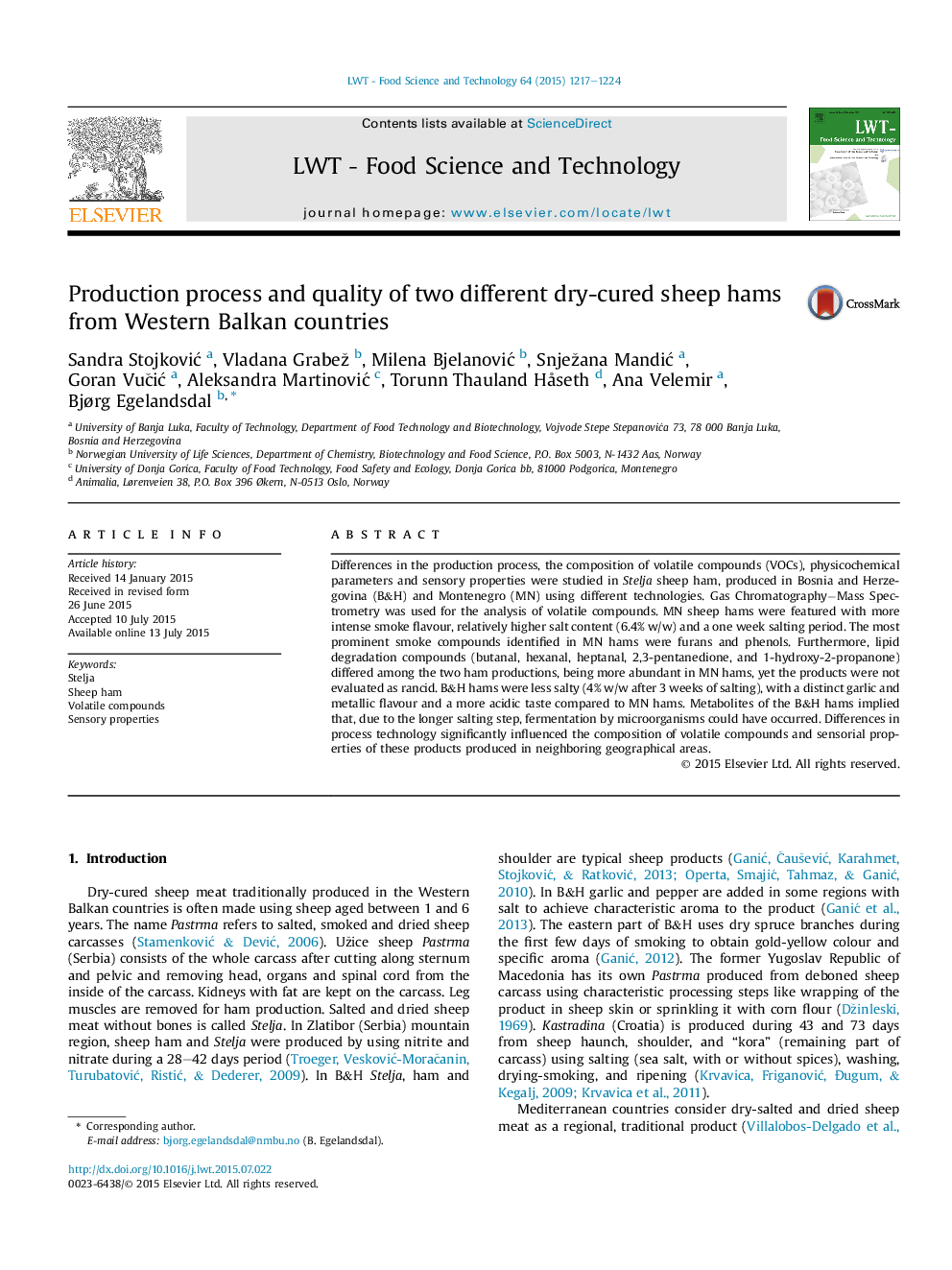| کد مقاله | کد نشریه | سال انتشار | مقاله انگلیسی | نسخه تمام متن |
|---|---|---|---|---|
| 6401966 | 1330884 | 2015 | 8 صفحه PDF | دانلود رایگان |
- Low salt B&H ham had garlic and higher metallic flavour, with stronger acidic taste.
- High salt MN ham was a heavily smoked with abundant lipid degradation products.
- The B&H salting procedure keep salt content low (4% w/w) maintaining a safe product.
Differences in the production process, the composition of volatile compounds (VOCs), physicochemical parameters and sensory properties were studied in Stelja sheep ham, produced in Bosnia and Herzegovina (B&H) and Montenegro (MN) using different technologies. Gas ChromatographyâMass Spectrometry was used for the analysis of volatile compounds. MN sheep hams were featured with more intense smoke flavour, relatively higher salt content (6.4% w/w) and a one week salting period. The most prominent smoke compounds identified in MN hams were furans and phenols. Furthermore, lipid degradation compounds (butanal, hexanal, heptanal, 2,3-pentanedione, and 1-hydroxy-2-propanone) differed among the two ham productions, being more abundant in MN hams, yet the products were not evaluated as rancid. B&H hams were less salty (4% w/w after 3 weeks of salting), with a distinct garlic and metallic flavour and a more acidic taste compared to MN hams. Metabolites of the B&H hams implied that, due to the longer salting step, fermentation by microorganisms could have occurred. Differences in process technology significantly influenced the composition of volatile compounds and sensorial properties of these products produced in neighboring geographical areas.
Journal: LWT - Food Science and Technology - Volume 64, Issue 2, December 2015, Pages 1217-1224
